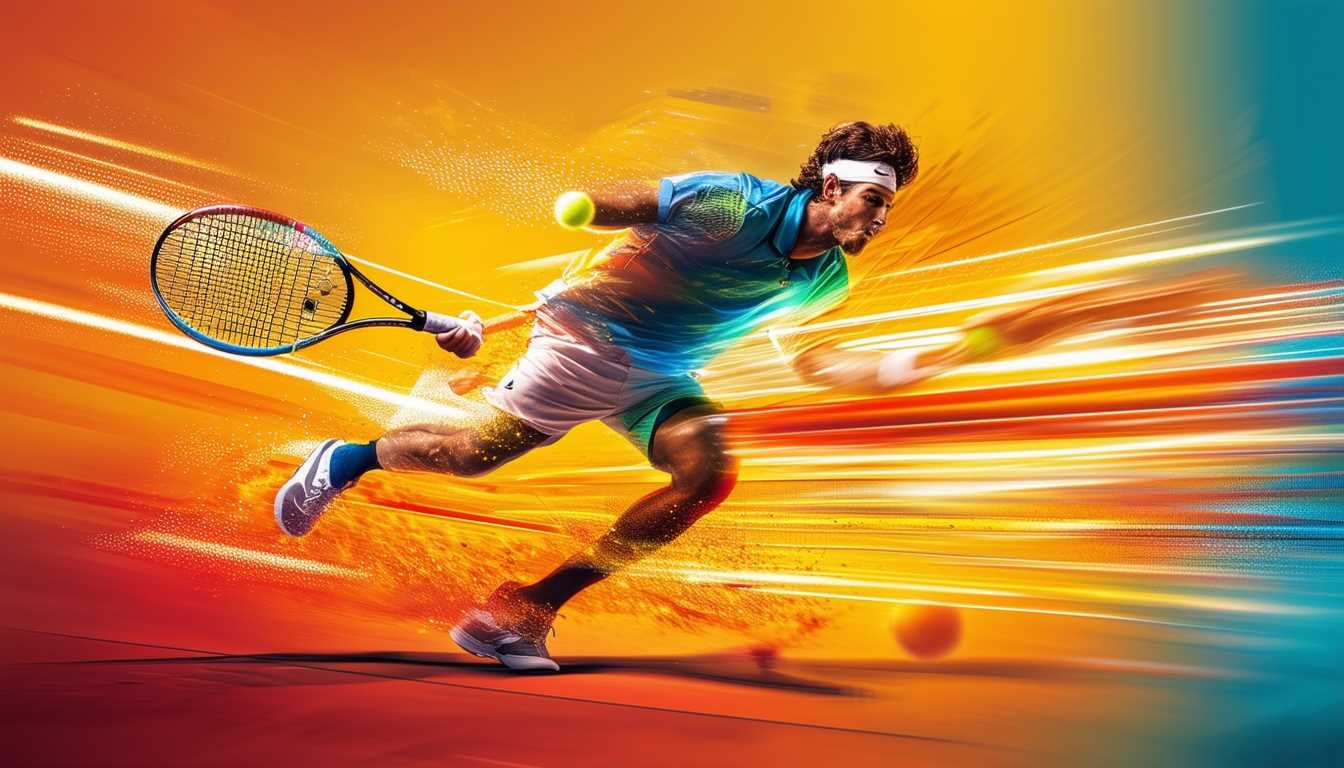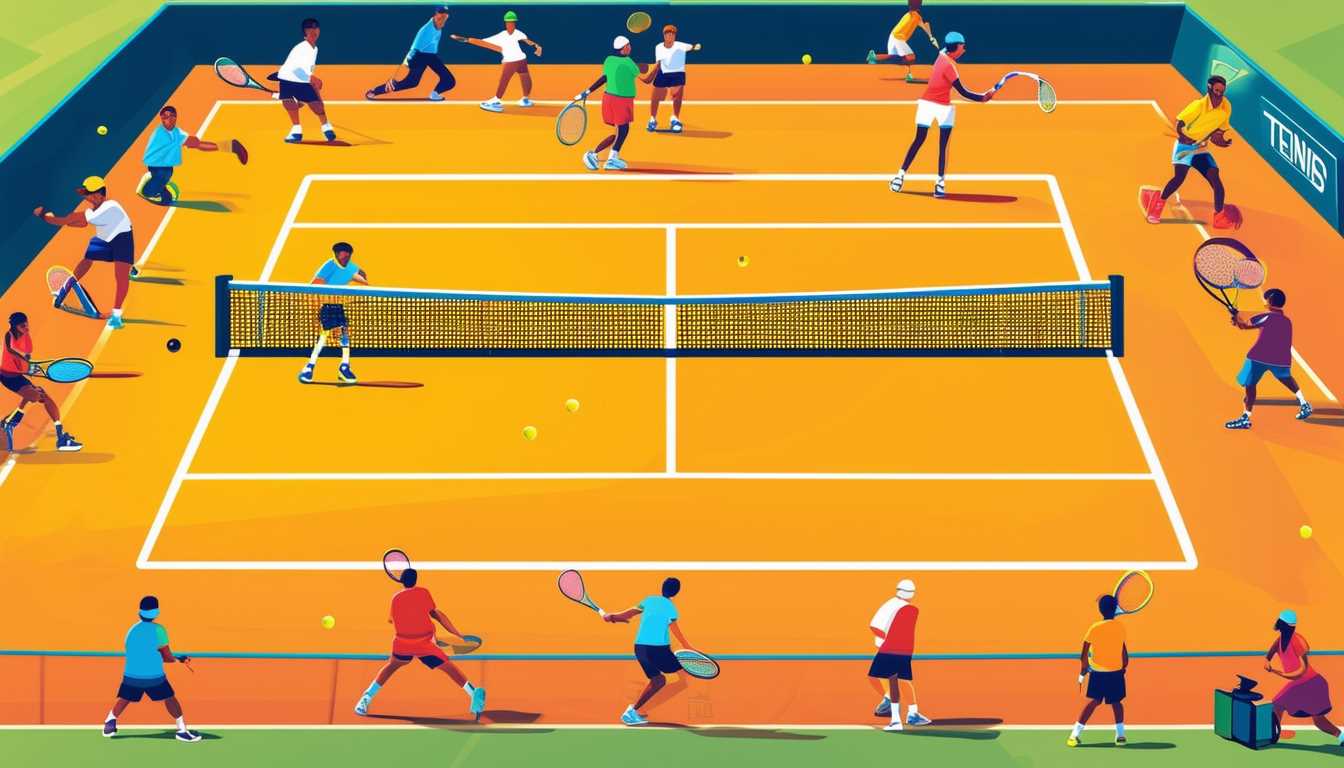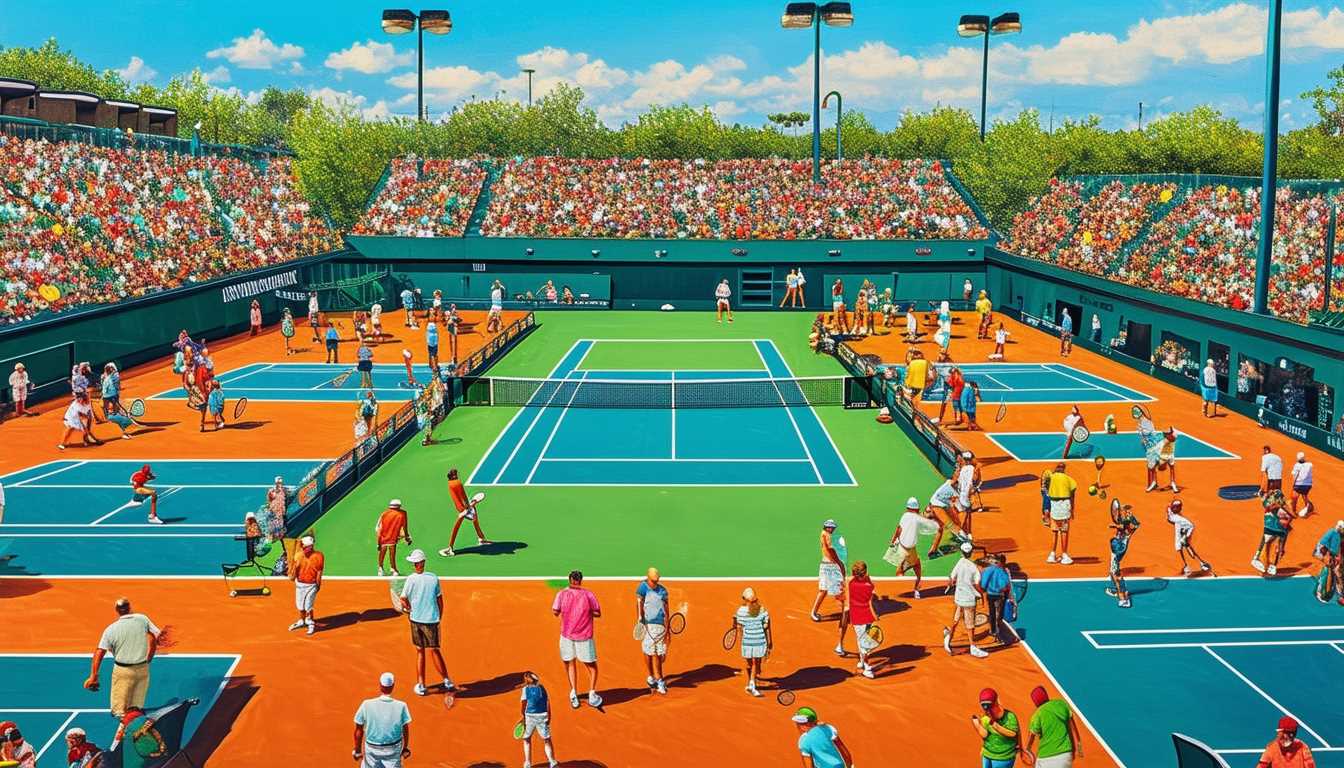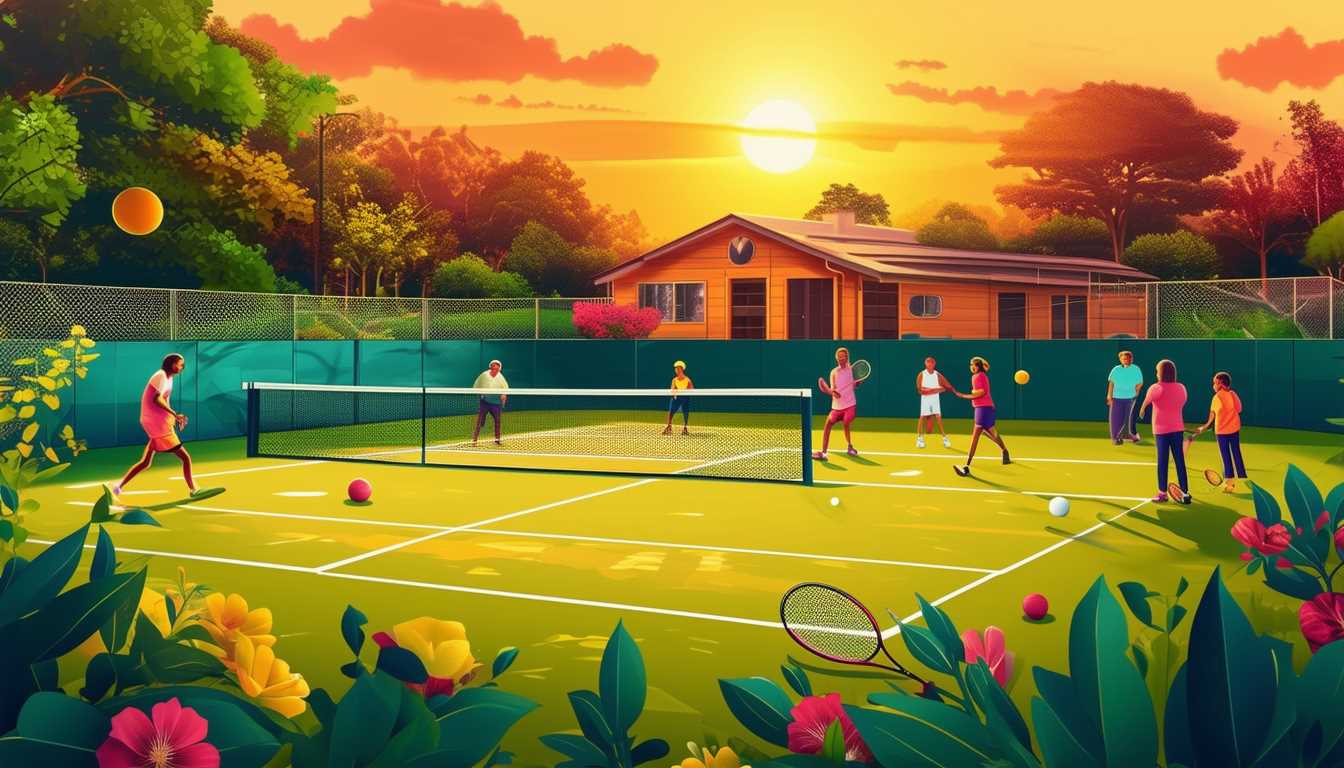An Introduction To Tennis Coaching Fundamentals

Let’s dive into the basics of teaching tennis, where our goal is to move from beginner to expert. This journey involves several key steps: learning the basics of the game, improving footwork, getting a grip on strategy and tactics, offering mental and emotional support, and putting in place effective training and drills. Each part is vital in developing a well-rounded player. However, the process of moving from basic skills to advanced techniques is complex and requires a deeper look into the art and science of coaching tennis.
In a simpler way, teaching tennis is all about starting with the fundamentals and then building on them. It’s not just about hitting the ball; it’s about moving correctly, thinking strategically, and staying strong mentally and emotionally. Plus, the right practice exercises make a big difference. While getting better at tennis is a step-by-step process, understanding how to teach these advanced skills is another layer of expertise.
Grasping the Basics
In tennis coaching, starting with the basics is crucial. Let’s dive straight into it. First, getting the grip right is fundamental. Think of the grip as your control center; it determines the power, control, and spin you can generate. Imagine holding the racket like you’re shaking hands with it. This way, you’re setting yourself up for success right from the start.
Next, we focus on the core strokes: forehand, backhand, serve, volley, and overhead. Each of these strokes serves a unique purpose and comes into play under different circumstances on the court. For instance, the serve kicks off the point and can set the tone for your game, while the volley is essential for those close net encounters. Think of practicing these strokes like building a toolkit; the more tools you have, the better prepared you are.
Now, let’s talk about stance. A good stance is like a strong foundation for a house. It keeps you balanced and ready to move in any direction. You want your feet shoulder-width apart and knees slightly bent, ready to spring into action. This position allows you to reach those tough shots and return them with confidence.
Incorporating these basics into your practice routine is the first step towards mastering tennis. As you get comfortable, you’ll start to see improvements not just in your technique, but in your overall game strategy. Remember, every tennis legend started with these same fundamentals.
For those looking to take their game to the next level, consider investing in a quality racket that suits your style of play and a good pair of tennis shoes that offer support and flexibility. Brands like Wilson and Babolat have great options for rackets, while Adidas and Nike offer shoes designed for the tennis court. These tools can make a significant difference in your performance.
Perfecting Footwork
Improving your footwork is key to getting better at tennis. Good footwork does more than just get you to the ball quickly. It also helps you hit the ball more powerfully and accurately. When your footwork is on point, you can stay balanced, which is crucial for making strong shots in different situations. This requires fast, nimble moves and being able to guess where the ball will go next.
To make your footwork better, practice drills that boost your side-to-side movement, speed, and coordination. For example, ladder drills are great for improving agility and foot speed. Another useful drill is the ‘shadow’ drill, where you move around the court without a ball, simulating match play. This helps with movement fluidity and conserves energy, preparing you to respond effectively to any play.
Strategy and Tactics
After mastering footwork, it’s time to sharpen your tennis strategy and tactics to take your game to the next level. Think of strategy as your game plan, crafted from knowing both your strengths and weaknesses and those of your opponent. It’s about planning your moves in advance. Tactics, however, are the decisions you make in the heat of the moment during a match. For example, you might switch up your serve direction if you notice your opponent favoring one side, or choose the perfect moment to rush the net.
To excel, it’s important to study matches and understand different playing styles. This means watching how others play, recognizing patterns, and practicing how to adapt when things don’t go as planned. Imagine you’re playing against a strong baseline player; mixing up your shots and incorporating short slices could throw them off their rhythm.
Moreover, integrating your footwork with strategic thinking makes you unpredictable and challenging to beat. Picture yourself effortlessly moving across the court, making split-second decisions that keep your opponent guessing. That’s the power of combining good footwork with a sharp mind.
For those looking to deepen their understanding of tennis tactics and strategies, books like ‘Winning Ugly’ by Brad Gilbert offer insightful tips from the professional circuit. It’s one thing to read about strategies, but applying them during practice sessions and matches is where you’ll see real improvement.
Mental and Emotional Support
Mastering the mental and emotional sides of tennis is just as important as getting the physical parts right. It gives players a full set of tools to handle the high pressures that come with competitions. Coaches play a key role here. They should focus on building resilience in players, teaching them how to keep their focus and stay calm when the pressure mounts. This means helping players see the positive side of things. When a player loses a match, it’s not just a loss, but a chance to learn and grow. It’s also vital for players to talk openly about what makes them anxious so they can tackle these feelings head-on.
One effective way to boost a player’s mental game is through visualization and goal-setting. Imagine a player who practices seeing themselves winning a match in their mind, or setting specific, achievable goals for their performance. This approach not only prepares them mentally but also gives them clear targets to aim for. Another key aspect is creating a supportive atmosphere. When players feel supported, their confidence and emotional resilience grow, making it easier to face the sport’s ups and downs.
Let’s not forget the practical tools and solutions that can help. For example, mental training apps designed for athletes can be a great addition to a player’s routine. These apps often include exercises for stress management, visualization, and goal-setting. Using them regularly can make a big difference in a player’s mental and emotional readiness.
Training and Drills
Shifting focus to the physical side of tennis, it’s crucial for players to engage in well-designed training and drills. These activities not only improve technique and stamina but also boost performance during matches. Coaches play a key role here. They need to create drills that mirror real-game situations, emphasizing both consistency and power. This approach pushes players to stay sharp, adapt to various play styles, and remain composed under stress.
For instance, drills that include a mix of forehand and backhand shots, volleys, serves, and footwork exercises mimic the diversity of a match. Such varied training ensures players are well-rounded and ready for anything. It’s also important to balance hard training with adequate rest. This prevents both physical injuries and mental burnout, ensuring players are always at their best.
Feedback is another critical element. After observing players during drills, coaches can offer personalized advice. This might involve suggesting adjustments to a serve technique or recommending a specific fitness routine to improve speed. Positive reinforcement combined with constructive feedback can significantly boost a player’s confidence and motivation.
Let’s look at a concrete example. Imagine a drill designed to improve a player’s reaction time and agility. The coach might use a ball machine set to deliver shots at random intervals and directions. This simulates the unpredictability of an actual match. To make the drill even more effective, the coach could introduce a competitive element, like keeping score or setting targets for the player to hit.
Conclusion
To wrap it up, getting the basics of tennis coaching right is crucial for building skilled players. It’s all about really understanding the essentials and focusing on improving how players move. This helps them quickly adjust during games.
Adding strategy and tactics into the mix sharpens their competitive skills, while giving mental and emotional support strengthens their resilience. By using specific training and drills, coaches can create players who are not just good with their technique but also smart in their play and tough mentally.
This sets them up for success in the challenging world of tennis.






